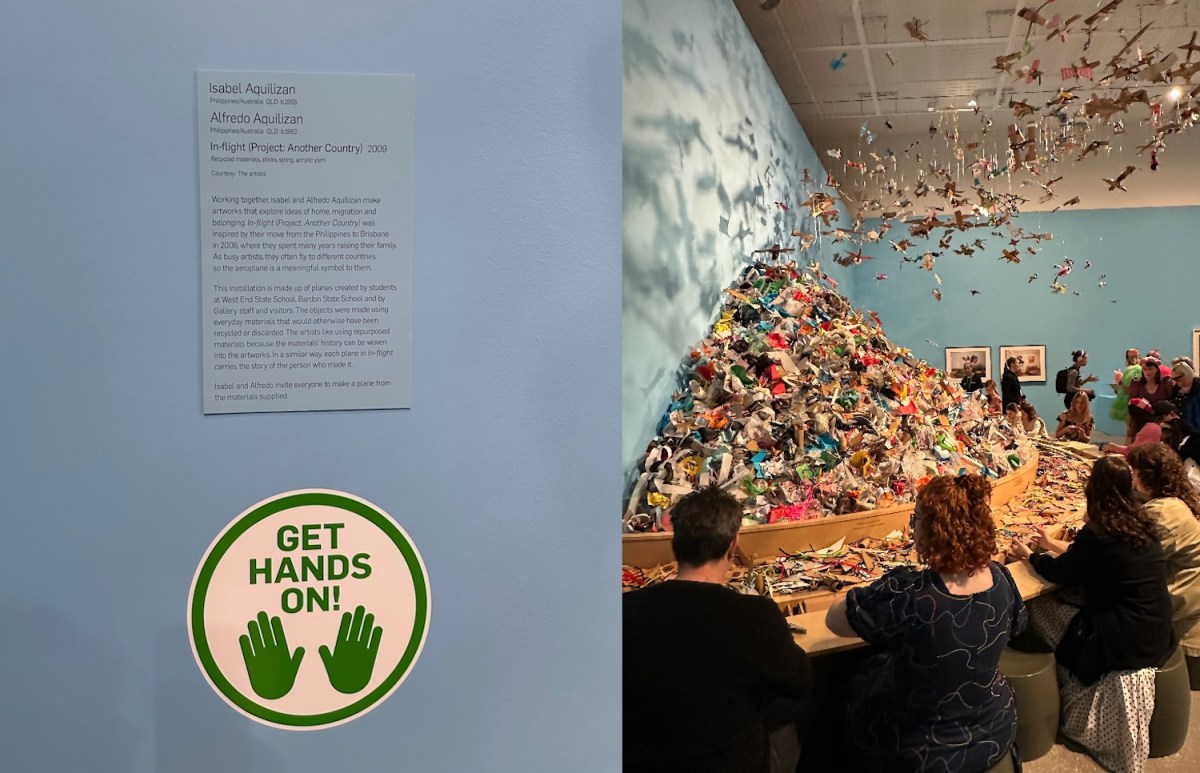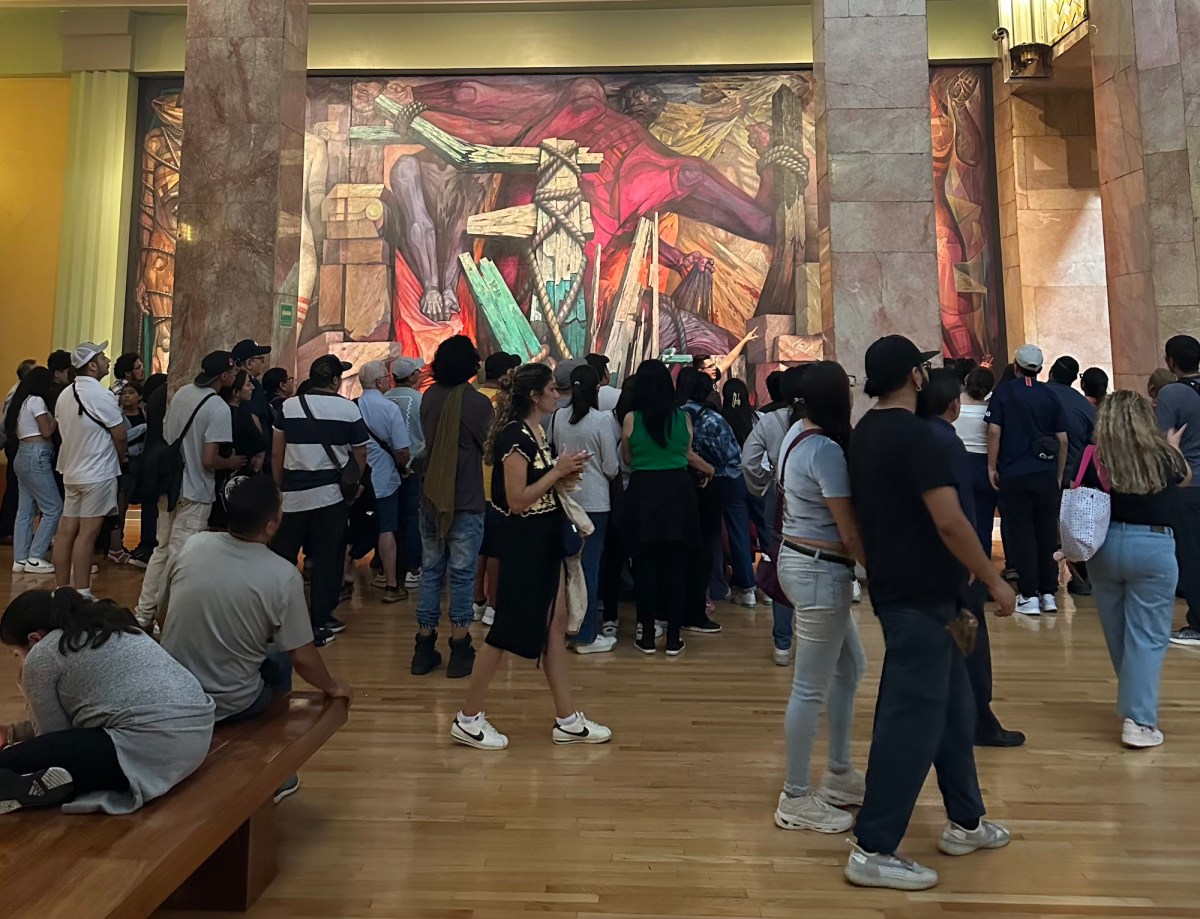Last month (16 June), the Louvre in Paris closed its doors unexpectedly stating ‘poor working conditions exacerbated by overcrowding’ – implying the safety of the artworks was at risk with the huge number of summer crowds.
Sarah Sefian, a gallery attendant at the Louvre and CGT-Culture member, told the Associated Press. “It’s not just about the art — it’s about the people protecting it.” Last year, the Louvre received 8.7 million visitors – many of whom were there just to see Leonardo di Vinci’s Mona Lisa.
A week earlier, in Mexico City, all the national museums went on rolling closures, again stating that they could not guarantee the safety of the artworks on display. In this case, the security company contracted to cover the museums did not have enough staff on their payroll to properly invigilate across the number of galleries and sites.
These concerns come at the same time that headline-grabbing acts of damage have seeped into the popular news. While the latest exhibition barely gets a mention on the morning and evening news, a couple sitting on – and damaging – a Swarovski-covered Van Gogh-inspired chair in Italy, went viral.
The sculpture by Nicola Bolla was repaired; however, the selfie-obsessed couple has not been identified. Museum director Vanessa Carlon told the BBC: “Of course it was an accident, but these two people left without speaking to us – that isn’t an accident.”
The week prior (2 June), news was shared of an incident in late May when a man broke into the terracotta army museum in Xi’an, in Shaanxi Province, China, damaging two of the ancient clay warriors, and in Peru (14 May), the image of a penis was spray-painted onto a wall at Chan Chan, the pre-Columbian city and UNESCO World Heritage Site.
What is going on?
This is on top of the persistent acts of ‘activism’ (aka vandalism) by climate activists who choose to use our art galleries and museums as sites of destruction – to speak about another kind of destruction.
Read: Why are climate activists glueing themselves to paintings?
To touch or not to touch?
The word that is common across all these situations is a lack of RESPECT. When will people learn that ‘do not touch the art’ means don’t touch the art. One would have thought that in the 21st century we have been significantly schooled in respecting our world’s holdings of culture and heritage.
Galleries love new audiences, right? But it would appear that galleries need to have a rethink on how much they instruct visitors on engagement with artworks. People are so accustomed at skimming these days when they read and take in information, that a subtle line on a wall text may no longer be adequate. Is this the cost of larger, more diverse audiences? Or do we need to be looking at other ways of educating new gallery enthusiasts?

Today, there are plenty of exhibitions that invite interaction – we only need to look at Queensland Art Gallery | Gallery of Modern Art’s (QAGOMA) exhibition Wonderstruck, which opened this weekend. With bold labels it makes it clear which artworks can be touched, and which can’t.
Interestingly, this exhibition was curated by the public engagement department, not the curatorial department.
In a similar wave of new tactics for educating visitors, staff at the Palazzo Maffei museum in Verona chose to share the news of the broken Van Gogh chair. While the act happened in April, the CCTV footage was only released in June, which then went viral.
However, the union again got involved, this time in a curious twist. Artnet writes that the union for security staff said the visitor had “tripped on a low platform intended to encourage museum-goers to keep their distance from the paintings.” With representative staff representative Silvia Barlacchi telling the London Times that, “Visitors are looking at the paintings, not at the ground. Those platforms are unsuitable and too dark.”
Do we need tougher laws?
In Australia we have had our own share of deliberate vandalism and damage in our galleries and at heritage sites. It is usually handled quietly – with works quickly whisked off the gallery floor and to the conservation department for assessment and, hopefully, repair. Largely, it is an insurance case, rather than one that is prosecuted.
Our laws protecting artworks in Australia are largely associated with copyright, fraud, theft or personal insurance claims. Prosecution for the vandalism of artworks is extremely rare.
In contrast, when the Chan Chan archaeological site was damaged, Peru’s Ministry of Culture released a harsh statement: “This act constitutes a serious lack of respect for our historical and cultural legacy, and represents a violation of the norms that protect archaeological heritage,” adding that it had launched an investigation against those responsible and had filed a criminal complaint.
According to the Peruvian Government’s Andina news agency, such acts fall under Article 226 of Peru’s Penal Code, with a maximum fine of six years of imprisonment.
Read: Regional galleries ‘not sexy enough’ for funding
The Ministry further stated: “We reiterate our strong commitment to the protection, conservation and defence of the nation’s cultural heritage. We urge the citizenry to actively participate in its care and preservation.”
It is an interesting difference, when Australia seems to be increasingly facing a government that lacks the spine to stand up and support the arts with the same level of respect.
Editor’s note: After publishing this story, the Uffizi Gallery in Florence made public that a tourist damaged an 18th century portrait by Baroque painter Anton Domenico Gabbiani when stumbling while taking a selfie (21 June). Artnet reports: “The perpetrator was immediately apprehended by museum staff, identified and reported to local authorities. According to a statement from the museum’s director Simone Verde, he will be prosecuted.” Verde said that the issue of Uffizi visitors who come to make memes and take selfies is ‘rampant’.






